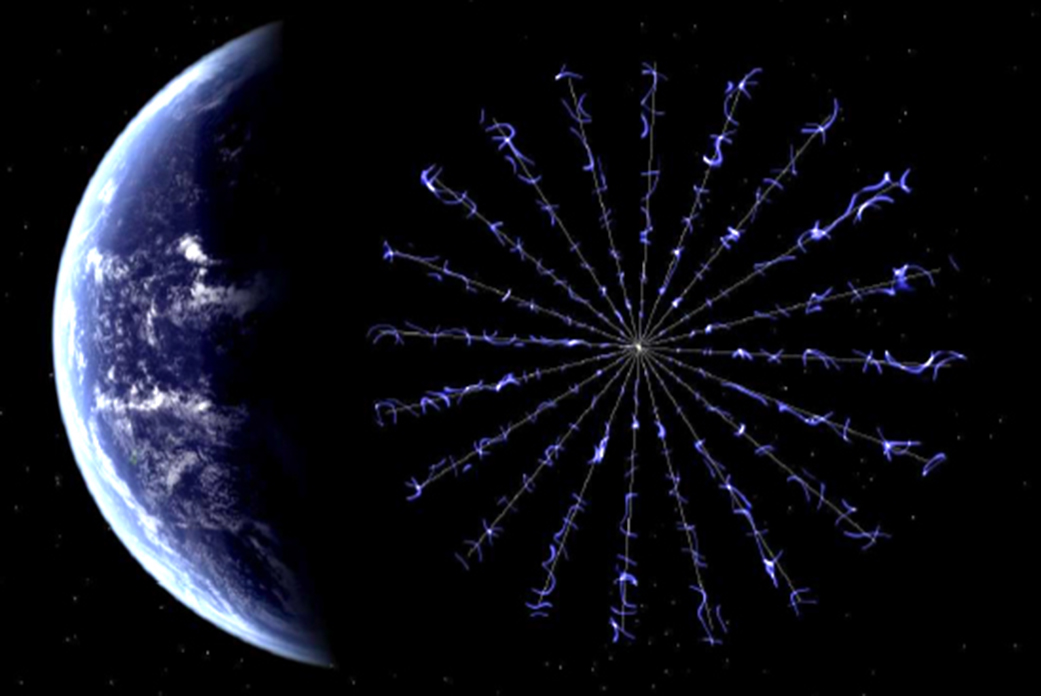
NASA image courtesy Jeff Schmaltz, MODIS Rapid Response Team. Caption: NASA/Goddard, Lynn Jenner
Bruce Wiegmann
NASA Marshall Space Flight Center
Description
Our Electric Sail (E-sail) propulsion team is excited to propose to the 2015 NAIC Phase II solicitation. Our international team includes: the inventor and patent holder of the E-Sail propulsion system (Dr. Pekka Janhunen of the Finnish Meteorological Institute (FMI), the Principal Investigator for NASA’s previous Tether Satellite System experiments that were flown on the Space Shuttle (Dr. Nobie Stone), fellow NASA NAIC former and present Fellow Dr. Rob Hoyt of Tethers Unlimited, Inc. (TUI), and Utah State University team lead by Dr. Robert Schunk. Our proposal builds upon our teams technical findings in Phase 1 – “that an E-Sail propelled spacecraft can travel 100 AU in less than 10 years or to the Heliopause (120 – 150 AU) in < 15 years”. In addition to the Heliopause missions, our team member – Dr. Pekka Janhunen of the Finnish Meteorological Institute (FMI) – has examined a number of missions of scientific discovery where the E-Sail propulsion system will provide rapid transits so various researchers could begin to get data back from outer planetary missions within 1 to 2 years of launch.
































